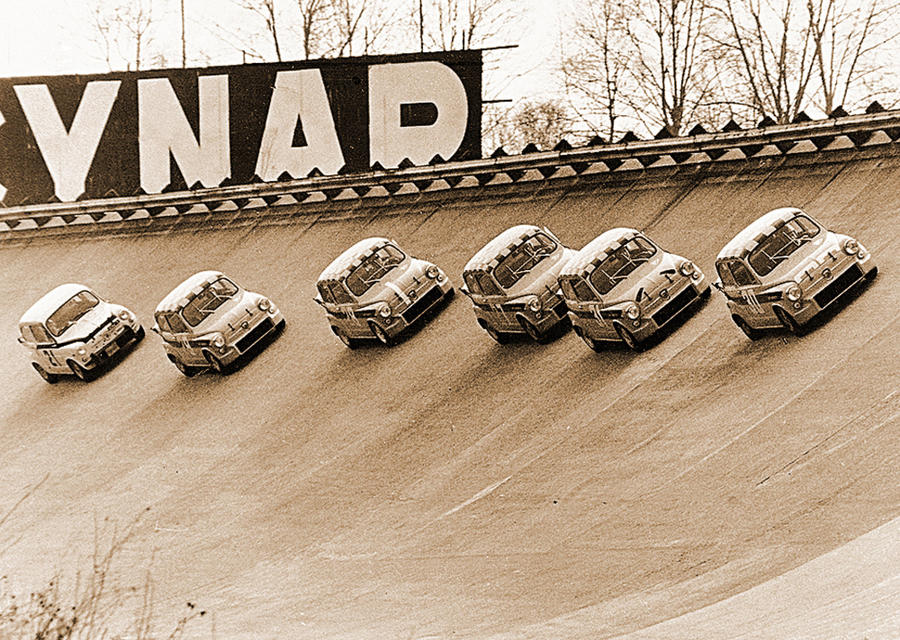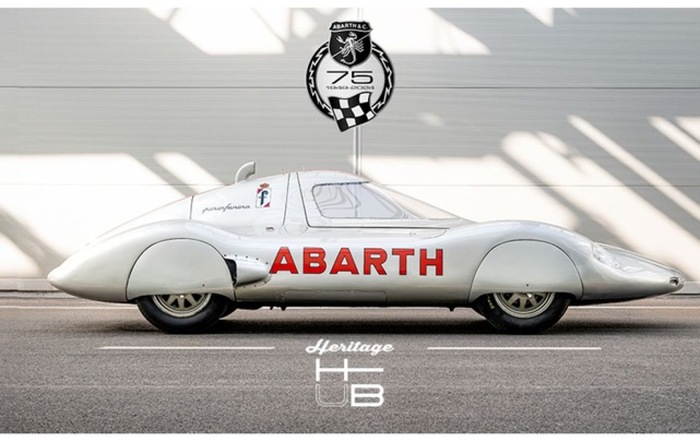With the 600 of 1955 and the New 500, presented two years later, Fiat accompanied the country's motorization after the war.
In the following period, thanks to the improved economic conditions, the Italians also rediscovered the desire to 'run' and to stand out with niche models, a trend immediately perceived and ridden by the Turin manufacturer with the launch in 1957 of the splendid Fiat 1200 Spider and in the 1959 of the Fiat Nuova 500 Sport.
And naturally there is also a boom in competitions, on the track and on the road, especially uphill.
Look at the photos
Abarth 850 TC, the little girl who won the races turns 60
And while in Great Britain John Cooper built the first 'peppery' variant of the Morris Mini in 1961, the one with a 54 HP 997 engine, in Turin the former racing driver and entrepreneur Carlo Abarth decided to switch from the 'elite' production of its racing cars to a more popular approach, joining the range first of the 500 and then of the Fiat 600 with its elaborate versions.
In 1961 Abarth created its 850 TC, which introduced an important organizational and industrial innovation. In the acronym of the new model 850 it clearly indicates the new displacement, while TC stands for 'Turismo e Competizione', to underline this new double soul of the Turin subcompact. As in the previous Abarth 750 derivation on a Fiat 600 base and Abarth 850 derivation on a Fiat 600 D base from the 1950s, the former Austrian-born driver starts from the standard mechanics, intervening on already complete units and then dismantled for modifications. Thanks to an agreement with Fiat - signed precisely 60 years ago - the workshop in Corso Marche 38 in Turin received 600 D semi-assembled units, in order to speed up construction times and significantly lower costs. As the specialized periodicals of the time report,the new Abarth 850 TC is offered for 850 thousand lire, against 990 thousand for the 750 derivation and 885 thousand for the 850 derivation.
At the engine level, the starting point is always the inline 4-cylinder of 767 cc of the Fiat 600 D: by increasing the bore to 62.5 mm and the stroke to 69 mm, the Abarth technicians increase the displacement up to 847 cc. The pistons and the compression ratio are also changed (which rises to 9.2: 1) and, thanks to the adoption of a new more thrust camshaft, a Solex 32 carburettor, a new air filter, of a different crankshaft and of course an exhaust suitable for sports use, it manages to bring the power to 52 HP at 5800 rpm, almost double compared to the 29 of the 600 D series.
The car thus transformed reaches 140 km / h, and it is necessary to intervene on the braking system in which the Girling discs take the place of the drums on the front wheels. And to solve, above all, the problem of overheating of the original 600 D engine which, having the water radiator placed next to the engine in the rear compartment, does not 'cool' enough because the action of the fixed fan is not accompanied by an adequate flow of water. 'air.
Abarth modifies the oil sump, which is increased, and inserts an oil cooler into the lubrication circuit, moved (after an initial phase) under the front bumper. Other new features of the 850 TC include the lowered suspension - obtained by mounting a crossbow with inverted eyelets at the front and shorter springs at the rear - and the presence of a pressure reducer to balance braking at all speeds.
Externally, the 850 TC was recognizable by the front shield with the Scorpion and the longer 'whiskers', by a dovetail frieze on the front bonnet, by the badges with tricolor lightning on the fenders, by the Fergat sheet metal rims equipped with ventilation with external flap or - as an option - 12-inch Amadori & Campagnolo alloy wheels.
The passenger compartment is also characteristic, with a three-spoke steering wheel in aluminum with a black or wooden crown, a Jaeger dashboard with three circular elements and, on the dashboard in front of the passenger, the 850 TC lettering and a small emblem. Thanks to the advantageous ratio between weight (610 kg) and power (precisely 52 Hp) and the excellent sports set-up, the 850 TC immediately becomes a phenomenon in competition.
The apotheosis arrives already in September 1961 at the famous 'hat-trick' in the grueling 500 km of the Nurburgring, where the drivers Furtmayr, Foitek and Mc Cowen lead the Abarth on the three steps of the podium. The success was such that already in November of the same year the house of Corso Marche decided to present an enhanced version called 'Nurburgring' with an engine raised to 55 HP and other modifications, all for a price of 900 thousand lire.
The 850 TC Nurburgring was in the middle of the range, above the 'base' and below the 850 TC / SS which had a power of 57 HP. This latest version went out of production at the end of 1962 when it was replaced by the 850 TC Corsa which - thanks to the new homologation for the touring category - offered a reinforced body, a further lowered trim, four disc brakes, electric petrol pump, front radiator. and the famous T81 racing muffler.









